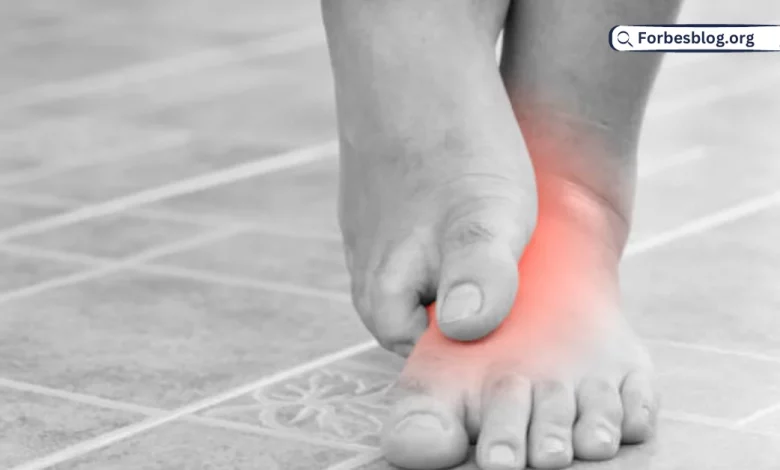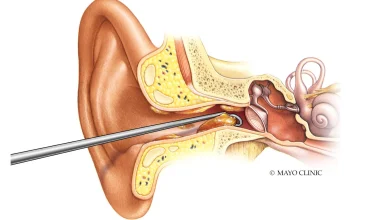Everything You Should Know About Diabetic Neuropathy

It’s rare to find people who have heard of neuropathy unless it has happened to them or to someone close to them. When the nerves outside a person’s brain, or the peripheral nerves get damaged, neuropathy occurs. Even though neuropathy can occur to anyone at any point in their life, the risk of suffering from it increases with age. Whenever a person starts suffering from neuropathy, they start to feel weakness, pain, and numbness.
Despite being quite an uncommon health condition, a big portion of Americans is at risk of getting affected by neuropathy. Based on the reports of the Cleveland Clinic, the rate is around 25% to 30%. Neuropathy can be of different types, and one such type is Diabetic Neuropathy. It is more common among people than the other types.
In this article, we will introduce you to the things you need to know about diabetic neuropathy, and how to deal with it.
Table of Contents
What is Diabetic Neuropathy?
Diabetic Neuropathy is a kind of nerve damage that’s caused by having long-term high sugar levels in the blood. It’s a common and serious complication of types 1 & 2 of Diabetes. Generally, this condition takes quite a long time to develop. So much so, that, at times, it develops over a period of several decades.
If someone is a patient of diabetes, and they face tingling, numbness, weakness, or pain in their feet or hands, these can be early symptoms of their suffering from diabetic neuropathy. The danger increases when they will no longer be able to feel the pain, and an ulcer develops on their feet. They must go see a doctor when they face the early symptoms.
If a person suffers from prolonged or severe peripheral neuropathy, they might be vulnerable to infections or injuries. There are various kinds of diabetic neuropathy that can affect different parts of the body, and cause a variety of symptoms. It’s important to check the glucose levels in your blood regularly if you have diabetes.
Symptoms of Diabetic Neuropathy
Symptoms of neuropathy usually appear gradually over a long period of time. The first type of nerve damage starts to occur in the nerves of the feet. This can lead to feelings of pain in the feet. The painful sensation often feels similar to the pain caused by “pins and needles”. Depending on the area affected by neuropathy, the symptoms of neuropathy can vary. Common symptoms and signs among the various types of Diabetic Neuropathy include:
- Sensitivity to Touch
- Trouble in Vision, such as Double Vision
- Increased Heart Rate
- Pain or Numbness in the Feet or Hands
- Burning Sensation in Feet, Mostly at Night
- Loss of Sense of Touch
- Difficulty with Coordination While Walking
- Inability to Sense Low Blood Glucose
- Nausea
- Indigestion, or Vomiting
- Constipation or Diarrhoea
- Muscle Weakness
- Bladder Problems, like Incomplete Bladder Emptying
- Vaginal Dryness
- Erectile Dysfunction
- Bloating or Fullness
- Dizziness While Standing Up
- Excessive or Decreased Sweating
Types of Diabetic Neuropathy
There are four main types of diabetic neuropathy. They are-
Peripheral Neuropathy
This is the most common type of diabetic neuropathy. Usually, the feet and legs of the patient get affected by peripheral neuropathy. The symptoms of peripheral neuropathy can be mild or severe. The symptoms are-
- Numbness
- Burning or Tingling Sensations
- Extreme Touch Sensitivity
- Insensitivity to Hot and Cold Temperatures
- Sharp Pain or Cramps
- Muscle Weakness
- Loss of Balance
Wounds often take more time to heal due to the poor blood circulation of diabetes patients. Some people experience these symptoms at night more often than daytime.
Autonomic Neuropathy
This is the second most common type of diabetic neuropathy. The autonomic nervous system runs the other systems in the body that you have no conscious control over. The problems that can come with Autonomic neuropathy are-
- Digestion Problems
- Sexual and Bladder Problems
- Cardiovascular Problems
Proximal Neuropathy
Proximal neuropathy is also known as diabetic amyotrophy, and it’s a rare form of diabetic neuropathy. It’s more often seen in adults over 50 years, and mostly in men. This neuropathy usually affects one side of the body and affects body parts such as the hips, thighs, or buttocks. Muscle weakness can occur in the legs, which can make it difficult to stand without assistance. The Symptoms of this neuropathy usually get worse at first and then eventually start to improve. People recover within some years even without treatment.
Focal Neuropathy
It occurs when there’s damage to a certain nerve or group of nerves. It appears out of nowhere and can be really painful. However, it also goes away within a few weeks or months, leaving no big and lasting damage. Here are the symptoms-
- Numbness, Tingling, Pain in fingers
- Inability to Focus
- Double Vision
- Aching Behind the Eyes
- Bell’s palsy
- Pain in Isolated Areas,
Causes of Diabetic Neuropathy
Diabetic neuropathy is normally caused by high sugar levels in the blood for a long period of time. There are also other factors such as damage to the blood vessels that are caused by high levels of cholesterol. Mechanical injuries like carpal tunnel syndrome can also cause it. Different lifestyle factors, like drinking or smoking, can also lead to diabetic neuropathy. Having low levels of vitamin B-12 in the body can also cause neuropathy.
Treatment Options for Diabetic Neuropathy
There’s no direct treatment method for diabetic neuropathy, as it can’t be cured. However, the progression of this condition can be slowed down by keeping the sugar levels in the blood within a healthy range. Also, some symptoms can be relieved. Regular exercise and quitting smoking can also work as a way of treating the condition. Here are some complementary treatment methods that can help diabetic neuropathy in check, slow its progression, and relieve some of the symptoms-
Medications
Doctors can provide specific medication to deal with the pain caused by diabetic neuropathy. You can consult with your doctor about available medications, and if they have any potential side effects.
Apart from pain management, doctors can prescribe medicines to deal with other different symptoms. If someone faces digestion problems, they can resort to smaller meals, with a lower amount of fat and fiber. Erectile dysfunction, vaginal dryness, etc. can be dealt with with different medications too.
Light Therapy and Other Therapies
Pain is the main problem that comes with diabetic neuropathy. There are different therapies that can help with pain management. Light therapy, acupuncture, and other various types of therapy can help with the pain management of diabetic neuropathy patients.
Light therapy especially can help a lot in reducing pain and inflammation, also preventing any further nerve damage. Red light and infrared light therapy can specifically help with diabetic neuropathy. If a patient exposes themselves to the strong light emitted by a light therapy device, the blood circulation in their body increases. Also, the light helps increase oxygen in the cells and increase microcirculation around the affected nerves in order to regenerate fibers and heal the peripheral nerves.
Light therapy also helps to regenerate nerves by stimulating fibroblast growth. The nerve cells of the body respond well to infrared light due to its bio-stimulating effects. Overall, this therapy can be highly helpful in dealing with diabetic neuropathy and its various syndromes, especially pain and inflammation.
Final Words
Diabetic neuropathy is something that can highly affect the usual way of life of a patient. They can go through various painful symptoms, which can make them feel really miserable. Even though there is no proper cure for this condition, and many of the types start to go away all by themselves after some time, you can always take proper measures to deal with the symptoms. You can keep the condition in check, and treat some of the symptoms by going through different methods, such as light therapy. Also, you can try preventing it by leading a healthier lifestyle and keeping the blood sugar level low in your body.




